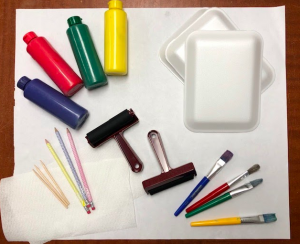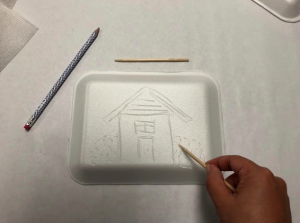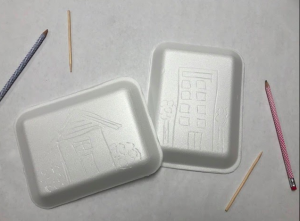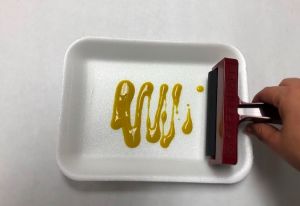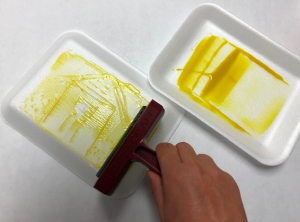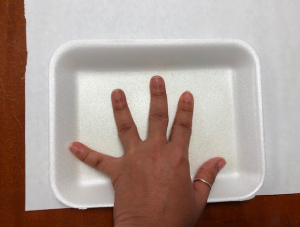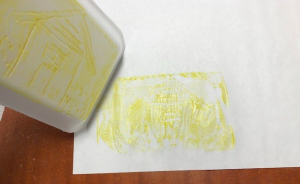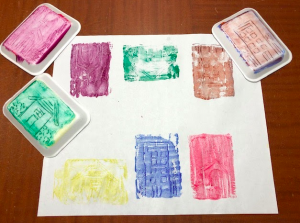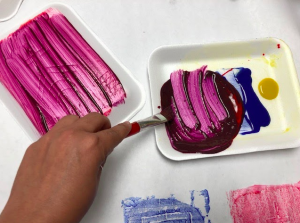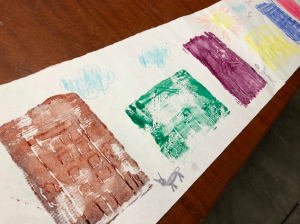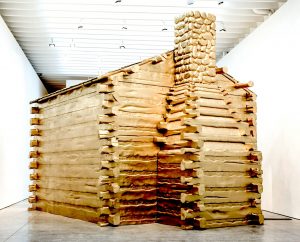
Will Ryman (American, b. 1969), America, 2013, Assorted materials including wood, exterior paint, 168 X 156 X 168 in., Gift of Sydney and Walda Besthoff, 2013.8
What do you see when you look at this sculpture by artist Will Ryman? A club house? A log cabin? A home? This is a big sculpture that we are allowed to step inside. And although the inside may look different than your house, it is a place that provides shelter.
A neighborhood is a place that consists of many homes and buildings and may also provide a sense of familiarity or comfort. In this activity, you will create a neighborhood landscape made up of several homes using a printmaking technique.
MATERIALS
- White poster board OR large bulletin board paper (length of preference)
- Assorted color paints
- Paintbrushes (or small brayer or rolling pin)
- Wooden stylus (or pencils with dull points)
- Styrofoam plates or flat trays
DIRECTIONS
Using a wooden stylus or dull pencil tip, draw the image of a house into the backside of a styrofoam plate or tray. Press firmly enough so that indentations are made with each line drawn, but not so hard that it makes holes in the foam. Hold the stylus at an angle.
On additional plates, draw different versions of buildings such as apartments, towers, churches, stores, etc. Add details like doors, windows, lines for bricks and wood siding, and any other identifiable features.
Set these aside.
Prepare to paint by making setting out paint of assorted colors on additional disposable plates.
Using a brayer, cover the foam picture evenly with paint. (A paintbrush can also be used to spread the paint around.
Tip: Use a paper towel to “blot” excess paint. Simply press the towel and lift; do not rub or wipe forcefully.
Lay the foam plate painted-side down on the large paper/poster board and press down with the palm of hand. Start at a corner!
Peel the plate back to see your print!
Repeat the process with additional drawings and colors. Place your buildings next to one another and along the edges of the paper.
Tip: Get creative with leftover paints in trays from the first round of prints by mixing primary colors (red, blue, yellow) to make secondary colors (purple, orange, green.)
PROJECT EXTENSION
If using a standard size poster board or large paper, cut in half and attach at ends to create a “row” of buildings as it would appear in a neighborhood. Fill in other aspects of your neighborhood such as people, animals, signs, and plants using crayons or markers to complete your neighborhood view.
